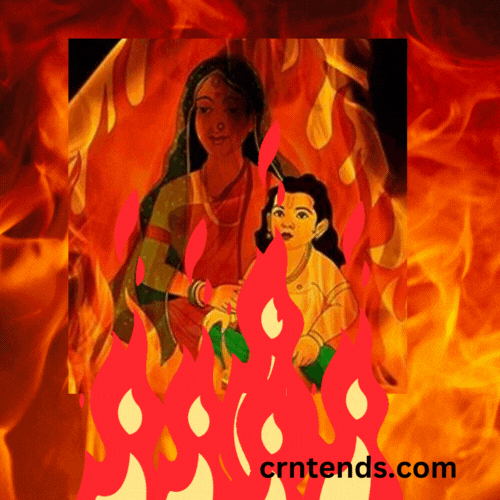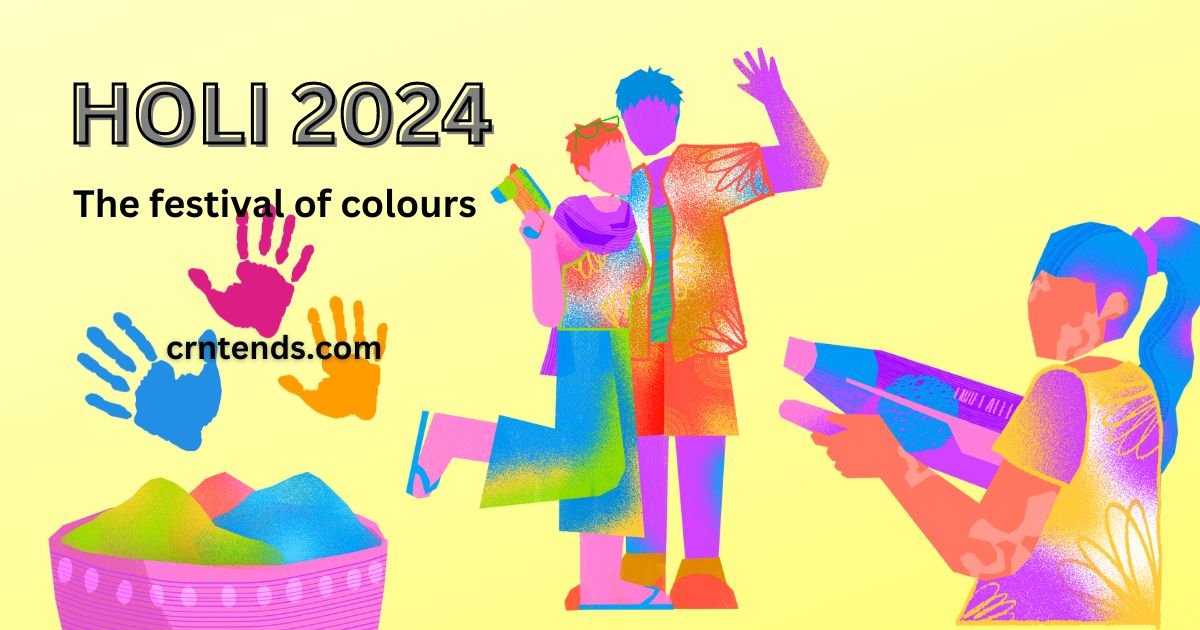India celebrates Holi, the festival of colours, with great cultural and spiritual significance. It is a colorful and joyous occasion. Hindu tradition attaches tremendous significance to the two-day Holi celebration, which is a riot of colour. It heralds the arrival of spring and the passing of winter by celebrating the triumph of good over evil. The festival also heralds the beginning of an abundant spring crop season Beyond its religious origins, Holi has spread around the world, drawing participants from all walks of life to partake in the celebrations and get completely submerged in a riot of color.
On the day of Holi, individuals toss colored powder into the air and splash it on others, turning entire streets and cities crimson, green, and yellow.In celebration, people also squirt each other with water. In addition to throwing colored water-filled balloons from rooftops, people often utilize water pistols to shoot water.
In many parts of India, huge pyres are lit on the eve of the festival as a symbol of the burning of evil spirits. Frequently, people toss sticks, dried leaves, and wood into bonfires.This vibrant custom represents more than just having fun; it also stands for the advancement of equality and unity as well as the dismantling of social boundaries. People of different ages, socioeconomic classes, and backgrounds together at Holi to erase differences and celebrate life’s common joys.

DATES OF CELEBRATION OF HOLI 2024
Every year, on the full moon day of Falgun month, people celebrate Holi. Holi, the festival of colors, falls on Monday, March 25, in the year 2024. The day before Holika Dahan, which is also known as Chhoti Holi, is Sunday, March 24, 2024.
This celebration encourages accepting fresh starts, forgiving others, and letting go of grudges. People get together to celebrate with their loved ones and friends, painting each other with vibrant colors while having a joyful time.

WHY HOLI IS CELEBRATED
The origins of Holi can be found in a number of mythical tales, the most well-known of which is the story of Holika and Prahlada. The event honors the victory of Lord Vishnu’s adolescent disciple Prahlada against his wicked aunt Holika, according to Hindu legend.The tale tells of a terrible king who grew to such much power that he made his people worship him as a god. To the king’s fury, however, his son Prahlada persisted in becoming a devoted follower of Lord Vishnu, a Hindu deity. The enraged king planned to murder his son with the help of his sister Holika. Prahlada was deceived into sitting in a pyre with Holika, who had fire resistance. The celebration gets its name from Holika, who was burned to death despite her immunity, but the boy, who was devoted to Lord Vishnu, survived the burning.
The burning of negativity and the victory of good over evil are symbolized by the bonfires lit during Holi. Rangwali Holi is celebrated the following day with great fervor as people play with colored powder and water, promoting joy and harmony.

Another myth behind the origin of Holi states that Lord Krishna’s skin turned a distinctive shade of blue after the demon Putana poisoned him with her breast milk. Krishna was concerned about whether his skin tone would make the fair-skinned Radha and her friends accept him in the future. Then, Radha’s mother invited Krishna to go up to her and apply whatever color he chose on her face. In the Braj region of India, the fun coloring eventually became a tradition and, eventually, a festival known as Holi.
CELEBRATION ACROSS INDIA:.On this day, different regions of India practice different customs.
- Holi is referred to as the spring festival, or basanta utsav, in Assam and West Bengal.
- The Uttar Pradesh town of Barsana, which is close to Mathura, celebrates Lathmar Holi.
- IN Punjab: Sikh community celebrated holla mohalla a day after holi.read more about HOLLA MOHALLA 2024
- In West Bengal, the festival is known as Dol Jatra, where idols of Radha and Krishna are worshipped.
- In Mathura and Vrindavan, the birthplace of Lord Krishna, Holi is a grand affair with elaborate processions, folk music, and traditional dances
Holi has become more well-known outside of the Indian subcontinent in recent years as people from many cultural backgrounds have come to celebrate the holiday. Holi is a joyful celebration that takes place in many locations across the world, drawing participants eager to experience its enthusiasm and colorfulness.While regional differences exist in customs and ceremonies, the spirit of this festival of colors transcends them all.
CONCLUSION
With its origins firmly rooted in mythology and history, Holi has developed into a worldwide festival of harmony, love, and happiness. Beyond the vibrant colors that cover faces and streets during the celebrations, Holi conveys a timeless message about overcoming adversity and the value of building relationships with one another. Let’s embrace the worldwide ideals of love, harmony, and unity that this festival represents as we immerse ourselves in the vivid hues of Holi. for more information visit
Hindus celebrate Holi, also called the Festival of Colors or the Festival of Love, in the springtime. Although it is mostly observed in India, it is now recognized and celebrated throughout the world. Holi, which heralds the entrance of spring, is often celebrated in March. The celebration of the victory of good over evil is a time for people to gather together, play with brightly colored powders and water.
The full moon day of the Hindu month of Phalguna, which is normally in March according to the Gregorian calendar, is when Holi is traditionally celebrated. The event lasts for two days, with Holika Dahan—the bonfire lighting—occurring on the eve of the main Holi day. Usually taking place on the night of the full moon, Holika Dahan is followed the next day by the vibrant Holi celebrations. Because of the lunar calendar, the dates could change a little every year.
The story goes that young Krishna was jealous of his beloved Radha’s fair skin. He colored Radha’s face in a playful way, giving her a multicolored complexion. This is frequently recognized as the first instance of color-playing at Holi.It signifies the dissolution of differences, the joy of life, and the renewal of relationships.

That’s Great
Very interesting